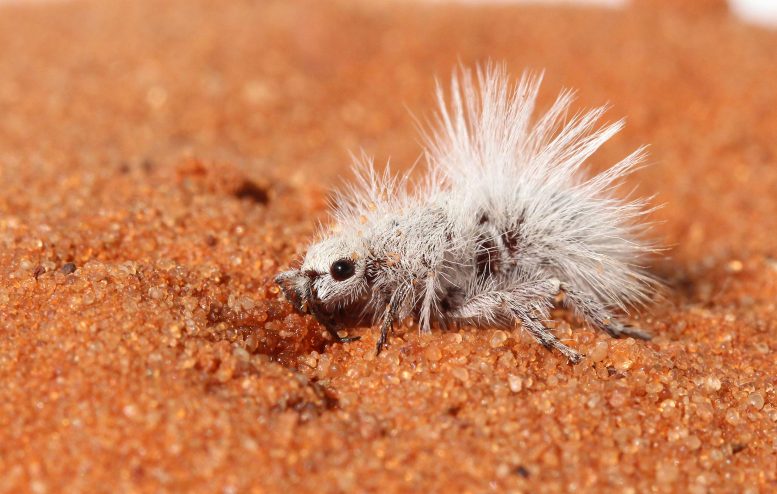
The Thistle-down velvet ant (Dasymutilla gloriosa), a type of wasp, is a rare example of a white-colored creature in a desert climate. USU researchers investigated varied explanations for the insect’s pale coloration. Credit: Joseph S. Wilson
Multiple approaches used to investigate adaptive coloration of Dasymutilla gloriosa.
Driving across the arid American Southwest, one views miles upon miles of scrubby creosote bushes. Well-adapted to the hot, thirsty landscape, the evergreen shrub, also known as greasewood, chaparral and gobernadora, produces tufts of fluffy, white fruit capsules. Living among the plants are similarly fluffy white insects, difficult to distinguish from the fruit, that are, in fact, a species of wasps known as Thistle-down velvet ants.
“Their scientific name is Dasymutilla gloriosa and they’re one of my favorites,” says Utah State University biologist Joseph Wilson.
Looking at the velvet ant and creosote fruit side-by-side, it’s easy to imagine the fuzzy wasp’s white coloration evolved as camouflage.
Not so fast, Wilson says.
“In the animal kingdom, there are relatively few examples of white being an adaptive color outside of arctic environments,” he says. “White coloration can be aposematic, meaning coloring meant to warn or repel predators, but it can also play a role in thermoregulation.”
Wilson and USU colleagues Jeni Sidwell and James Pitts, along with Matthew Forister of the University of Nevada and Kevin Williams of the California Department of Food and Agriculture, discuss new findings about Thistle-down evolution in the July 15, 2020 issue of Biology Letters.
In 2015, the USU biologists identified North American velvet ants as one of the world’s largest known Müllerian mimicry complexes. Mimicry, a form of defense in which one animal copies another of a different species in appearance, actions, or sound, is an evolutionary phenomenon scientists identified in the late 19th century.
“It’s logical to assume Thistle-down velvet ants evolved their appearance to hide from predators among fallen creosote fruits,” says Wilson, associate professor in the Department of Biology at USU’s Tooele campus. “But the wasps preceded the arrival of the creosote bush to the American Southwest by millions of years. So we investigated other explanations for their white coloration.”
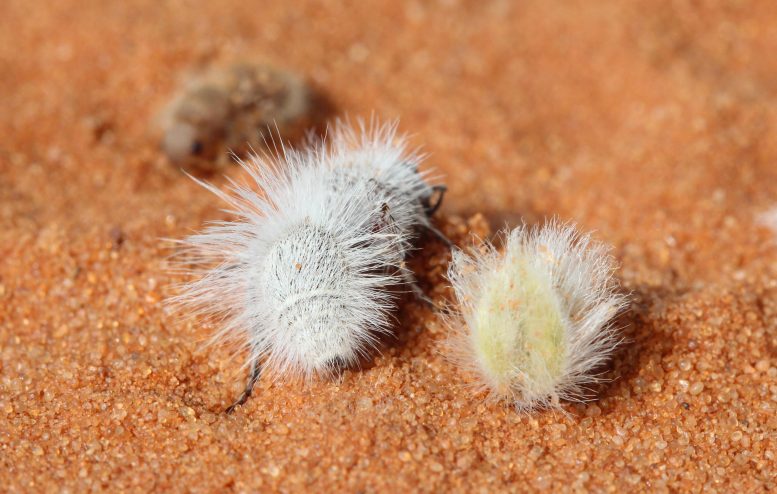
A Thistle-down velvet ant (Dasymutilla gloriosa), left, and a fallen fruit from a creosote bush (Larrea tridentata), right, are similar in appearance. Utah State University scientists investigated the idea the wasp’s appearance evolved as camouflage. Credit: Joseph S. Wilson
The team surmised the wasps’ pale coloring could provide thermoecological benefits in their sizzling hot environment. The researchers investigated genetic data. They used reflectance spectrometry to compare spectral reflectance of the wasps and the creosote fruit. With a thermal imaging camera and other probes, the scientists measured the organisms’ external and internal temperatures.
Sampling extensive data and following varied analyses, the team concluded the velvet ants’ white coloration is an adaptation to the hot desert environment, rather than predation pressure.
“We learned not to judge a book by its cover,” Wilson says. “We each looked outside of our narrow specializations to apply varied disciplines to the questions we were asking. When considering coloration, never assume non-humans view colors as humans do. Thistle-down velvet ants are white to us and look like creosote fruit, but we don’t know exactly how they appear to the wasps’ predators.”
Reference: “Thistledown velvet ants in the Desert Mimicry Ring and the evolution of white coloration: Müllerian mimicry, camouflage and thermal ecology” by Joseph S. Wilson, Jeni Sage Sidwell, Matthew L. Forister, Kevin A. Williams and James P. Pitts, 15 July 2020, Biology Letters.
DOI: 10.1098/rsbl.2020.0242


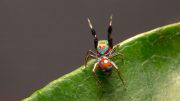

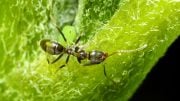
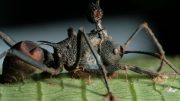
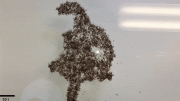
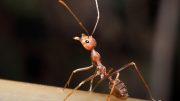
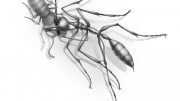
I’ve seen them side- by-side to old cottonwood plumes (seeds) As the plumes are being swept across the ground because of a breeze, the wasp moves in a herky-jerky movement that, to me, replicates the movement of the cottonwood seed. I know this flies against your hypothesis, and your thoughts are perfectly acceptable to me, but you need to see these wasps next to the cottonwood seeds. I wonder if there can be several natural selection processes going on? I live in Yuma, Arizona and I saw about 4-5 of these female wasps in April, 2021 across the Colorado River in Winterhaven, CA.